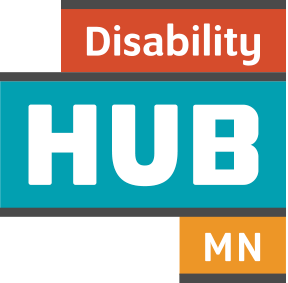Find answers to common questions about waivers and how professionals can work together to support waiver participants.
See questions and answers about:
Work Toolkit:
Find answers to common questions about waivers and how professionals can work together to support waiver participants.
See questions and answers about:
People who have a disability and need supports to stay in their home, work in the community, or participate in their community. There are specific eligibility criteria a person must meet to qualify for a waiver, but anyone can ask for a MnCHOICES assessment by calling their county or tribal human services office.
If you think the person you’re working with could benefit from waiver services, you can refer them to contact their county or tribal human services office where they live. After being contacted, the county or tribe will complete an in-person assessment within 20 days from the request. They will use a MnCHOICES assessment to gather information and help make decisions about the person’s long-term services and supports in a person centered way. Once determined eligible, the county or tribe will connect the person with a waiver case manager who will create a plan with the person, identifying goals and needed services.
You can encourage the people you work with and their families to consider waiver services and supports, but they will have to request a MnCHOICES assessment themselves. If a person or family needs help, you can assist them with contacting the county or tribe.
People of any age with a disability or in need of long-term services and supports should be referred for a MnCHOICES person-centered assessment and support-planning process when they need help to make decisions about long-term services and support needs. As soon as you think that the person you are working with could benefit from supports, referring the person or family to county or tribal social services is appropriate. Exploring and connecting with county or tribal services early can help ensure the person will not need to scramble to get the services and supports they need.
Specifically, MnCHOICES helps with the following:
For more information, see the two resources below:
Consumer-directed community supports (CDCS) lets people have more choice and control over their waiver and the services they get. CDCS is not a separate waiver. It is a way for people on CADI, CAC, BI or DD waivers to use their waiver dollars to self-direct their own services. With CDCS they get to choose and design the services and supports that best fit their needs. They get to hire the people they want and get the services when and how they want them.
CDCS also lets people use their waiver dollars to buy non-traditional supports, like special therapies, assistive technology or home and vehicle modifications.
The person’s CDCS budget is set based on their needs identified in the most recent MnCHOICES assessment. The person’s needs must be assessed every year, or when significant changes in needs happen. The budget may increase or decrease, depending on the person’s needs. Sometimes the budget won’t change, only the services change.
For example, if the person lives in a group home, has never worked and now wants to use their waiver to pay for employment supports needed to explore and plan for work or for ongoing supports on the job, they have a new need and their support plan will need to be updated. Their budget won’t necessarily change, but how the money is used will be different paying for employment supports instead of residential day services.
You can see the workflow of what generally happens with waiver employment services. The first step is for the person to get a MnCHOICES assessment. There are many points in the process where collaboration with schools and/or VRS/SSB is important.
Note: The process for CDCS is different since the person manages their own budget and coordinates their own services. With a CDCS budget, a MnCHOICES assessment is still done, the waiver case manager still meets with the person to discuss their needs, makes sure services fit within the CDCS budget, and authorizes the services. The person coordinates with their own staff and providers.
The Community Based Services Manual has a list of covered services for each waiver:
As you help people plan and receive the supports they need to be successful, engaging with the county or tribe about waiver services is important in making sure the person 1) has coordinated plans that will set them up for success, and 2) has the supports they need and that the services they’re getting from different programs aren’t duplicating or conflicting.
When you learn the person you are supporting is on a waiver:
If you are working with a student who is already receiving waiver services, it is important that you are coordinating the IEP services/goals with their HCBS waiver support plans.
If you are having trouble identifying a person’s case manager, reach out to your county’s/tribe’s social services area.
At the Hub, there’s no such thing as a wrong question. We're here to help. Contact us Monday to Friday, 8:30 am to 5 pm.
